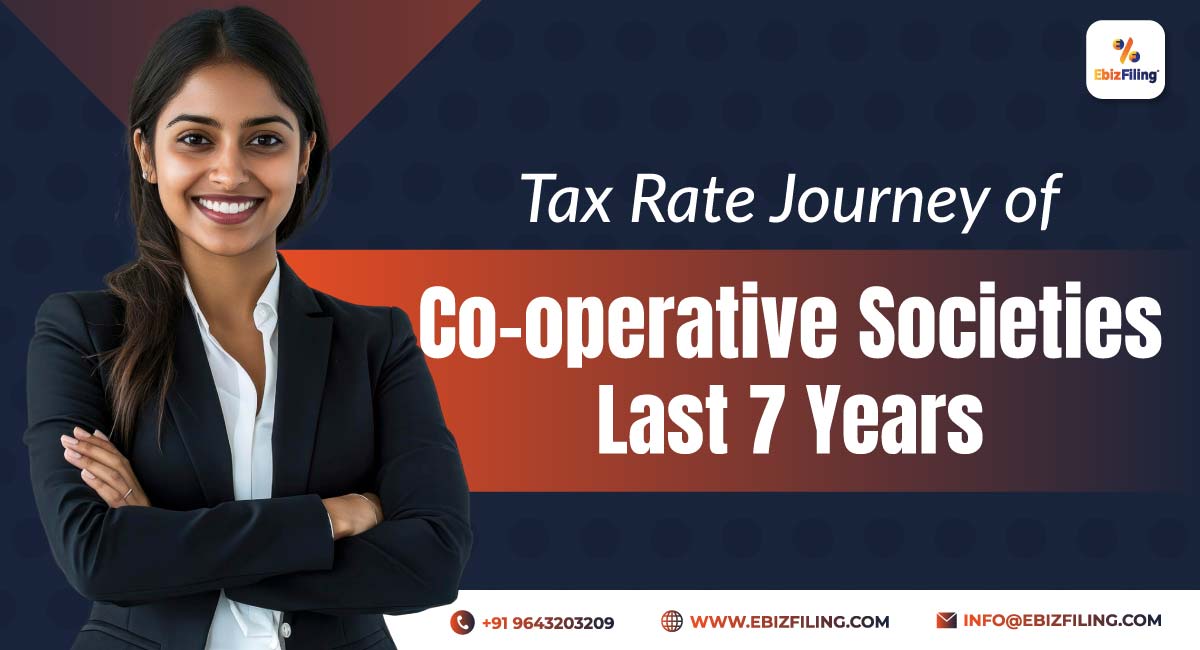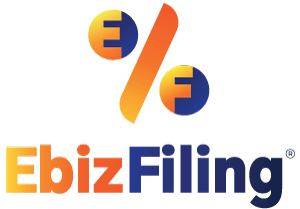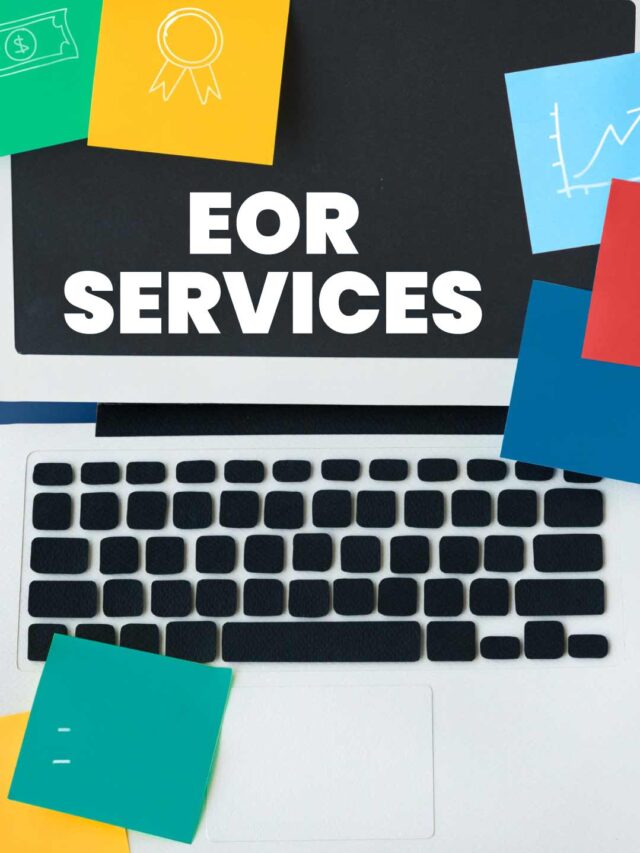
-
September 26, 2025
-
ByDhruvi
Income Tax Rates for Co-operative Societies – Past Seven Years
Introduction
Co-operative societies in India are entities registered under cooperative law (state or central) that work for their members’ mutual benefit. Their income tax treatment under the Income Tax Act includes normal slab rates and optional concessional regimes. Unlike other entities, a cooperative society’s tax depends on whether it opts for a concessional scheme (e.g. under Section 115BAD or 115BAE) and the nature of its deductions. Over the past seven years, changes have come mostly via new optional schemes; the basic slab structure has remained stable. Below is a year-wise overview of co-operative society tax rate from FY 2018-19 to FY 2025-26 (AY 2019-20 to AY 2026-27) based on Finance Acts, CBDT notifications, and tax analysis sources.
Year-Wise Co-operative Society Income Tax Rates
|
Financial Year |
Assessment Year |
Normal Slab Rate (Co-op Society) |
Optional / Concessional Rate |
Surcharge |
Health & Education Cess |
Notes / Effective Rate |
|
2018–19 |
AY 2019–20 |
10% up to ₹10,000; 20% for ₹10,001–₹20,000; 30% above ₹20,000 |
— |
7% (>₹1 cr), 12% (>₹10 cr) |
4% |
AMT applicable under Sec. 115JC |
|
2019–20 |
AY 2020–21 |
Same as above |
— |
Same as above |
4% |
— |
|
2020–21 |
AY 2021–22 |
Same as above |
22% under Section 115BAD (if opted, no exemptions/deductions) |
7% / 12% |
4% |
AMT not applicable if 115BAD opted |
|
2021–22 |
AY 2022–23 |
Same as above |
22% under Section 115BAD (optional) |
7% / 12% |
4% |
— |
|
2022–23 |
AY 2023–24 |
Same as above (10%, 20%, 30%) |
22% under Section 115BAD (optional) |
7% / 12% |
4% |
— |
|
2023–24 |
AY 2024–25 |
Same as above |
22% under Section 115BAD; 15% under Section 115BAE for new manufacturing co-ops |
7% / 12% |
4% |
Concessional 15% for new manufacturing |
|
2024–25 |
AY 2025–26 |
Same as above |
22% under Section 115BAD; 15% under Section 115BAE |
7% (>₹1 cr ≤ ₹10 cr), 12% (>₹10 cr) |
4% |
Surcharge moderated; AMT aligned to 15% |
|
2025–26 |
AY 2026–27 |
Same as above |
22% under Section 115BAD; 15% under Section 115BAE |
Same as above |
4% |
Continuation of concessional regimes |
Notes on Effective Rate / Observations:
-
Under the normal slab, cooperative societies pay progressive rates: 10%, 20%, 30%.
-
Under the income tax co-operative society optional regime (115BAD), flat 22% applies (without many deductions).
-
For new manufacturing cooperative societies, for income from manufacturing started before March 31, 2024, 15% rate under 115BAE is available.
-
Surcharge has been moderated: the surcharge for income > ₹1 cr up to ₹10 cr has been reduced from 12% to 7%.
-
AMT for co-operative societies is generally 15% of adjusted total income when deductions claimed.
-
Health & Education Cess at 4% is consistently applied on tax + surcharge.
Key Insights on Co-operative Society Taxation
1. Tax Treatment & Slab Rates
Co-operative societies are taxed under the slab system:
-
10% on income up to ₹10,000
-
20% on income between ₹10,001 and ₹20,000
-
30% on income exceeding ₹20,000
They may instead opt for a concessional regime where they pay a fixed co-operative society tax rate (e.g. 22%) by foregoing certain deductions.
2. Optional Regimes (115BAD / 115BAE)
-
Section 115BAD: Available to co-operative societies from FY 2020-21 onward. If the society opts for it, it pays tax at 22% without claiming specified deductions or incentives.
-
Section 115BAE: For new manufacturing cooperatives set up on or after April 1, 2023, income from manufacturing may be taxed at 15%.
3. Surcharge & Health & Education Cess
-
Surcharge: 7% of tax if total income > ₹1 cr but ≤ ₹10 cr; 12% if > ₹10 cr.
-
Health & Education Cess: 4% on (tax + surcharge).
4. Alternate Minimum Tax (AMT)
-
When a co-operative society claims deductions under certain sections, AMT under Section 115JC comes into play. The AMT rate is 15% of adjusted total income.
-
Cooperatives opting for 115BAD / 115BAE are generally exempt from AMT.
5. Effective Tax Burden
-
Under the slab regime, the effective tax rate depends on which slab income falls into, surcharge, and cess.
-
For those opting 115BAD, the effective burden is 22% + surcharge + cess, but many deductions are forfeited.
-
New manufacturing cooperatives under 115BAE get a lower burden of ~15% + surcharge + cess (for their manufacturing income).
Conclusion
The co-operative society tax rate in India over the past seven years has predominantly been governed by slab rates (10%, 20%, 30%) under the normal regime. The introduction of optional schemes like Section 115BAD (22%) and 115BAE (15% for qualifying new manufacturing co-ops) gave societies alternate routes with trade-offs in deductions. Surcharge reductions and AMT alignment further eased the burden. Entities must carefully choose between slab vs concessional regime based on their operations and deductions.
Suggested Read :
Income Tax Rates Slab for FY 2023-24 (AY 2024-25)
Income Tax Rates Slab for FY 2022-23 (AY 2023-24)
Income Tax Rates Slab for FY 2021-22 (AY 2022-23)
Income Tax Rates Slab for FY 2020-21 (AY 2021-22)
Income Tax Rates Slab for FY 2019-20 (AY 2020-21)
FAQs on Co-operative Society Taxation
1. What is the normal tax slab for a co-operative society?
Up to ₹10,000: 10%, ₹10,001–₹20,000: 20%, above ₹20,000: 30%.
2. Can a co-operative society choose a fixed tax rate?
Yes. Under Section 115BAD, it can opt for a flat 22% rate by forgoing certain deductions.
3. What is the co-operative society tax rate for new manufacturing co-ops?
For manufacturing started before 31 March 2024, under Section 115BAE, rate is 15%.
4. When does surcharge apply to co-operative societies?
If total income exceeds ₹1 crore, surcharge of 7% applies; if above ₹10 crore, 12% applies.
5. Is Health & Education Cess applicable?
Yes, 4% on tax plus surcharge.
6. What is Alternate Minimum Tax (AMT) for co-operative societies?
When deductions are claimed, AMT at 15% of adjusted total income (plus surcharge & cess) may be applicable.
7. Are co-operative societies opting 115BAD/115BAE subject to AMT?
No, such societies are generally exempt from AMT provisions.
8. Do these rates apply from 2018–19 to 2025–26 uniformly?
The slab rates have remained consistent; the optional regimes gradually kicked in from FY 2020-21 onward.
9. How does one decide between slab vs concessional regime?
If deductions are minimal, opting the 22% regime may be beneficial. But if you have many deductions, slab regime might give lower final tax.
10. Where can I get help for compliance and choosing regime?
Professionals with expertise in cooperative taxation, CA firms, or tax advisory services can assist in selecting between the normal slab regime or optional scheme, and ensure correct filings.
Income Tax Return
File your Income Tax Return online with ease and expert support – EbizFiling!
About Ebizfiling -










January 2, 2026 By Dhruvi
Should TRPs expand services beyond tax returns? At Beginning, For many Tax Return Preparers, the work begins and ends with tax returns. And for a long time, that made complete sense. Clients came once or twice a year, filed their […]
January 2, 2026 By Dhruvi
Key Taxation and Financial Regulation Updates from April 1, 2025 Introduction As the new financial year begins, several important changes in taxation and financial rules will come into effect from April 1, 2025. These updates will impact individuals, businesses, and […]
January 1, 2026 By Dhruvi
How can tax preparers guide clients on company compliance? Most tax preparers meet clients when something is already due. A return has to be filed. A notice has arrived. A deadline is close. That is how the relationship usually begins. […]